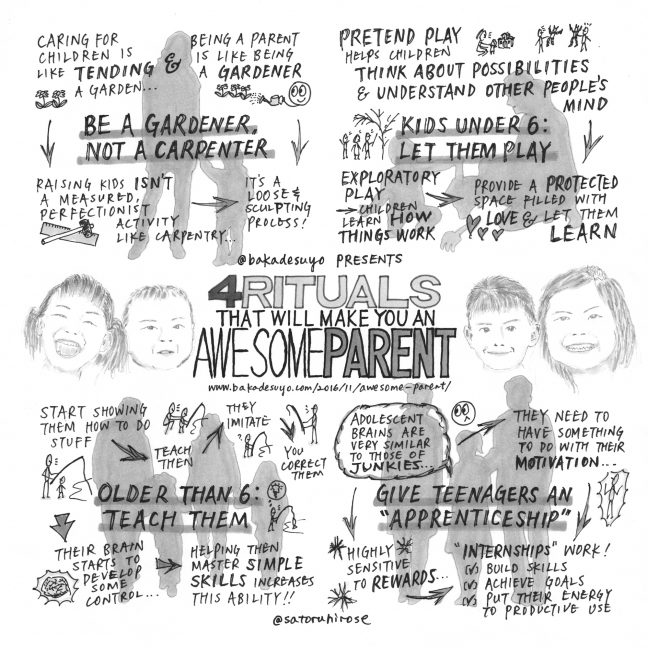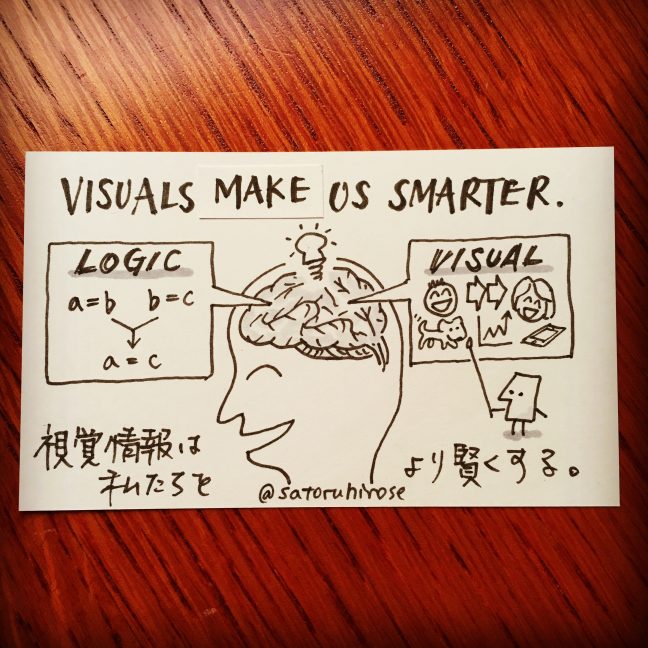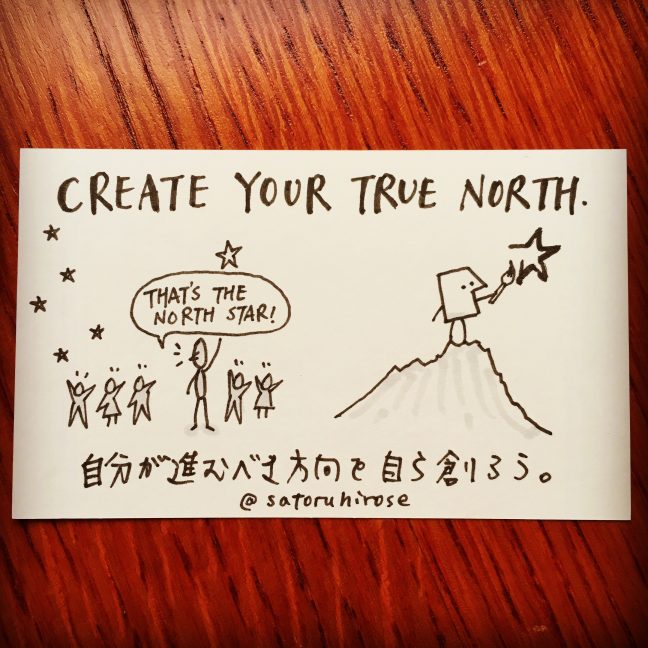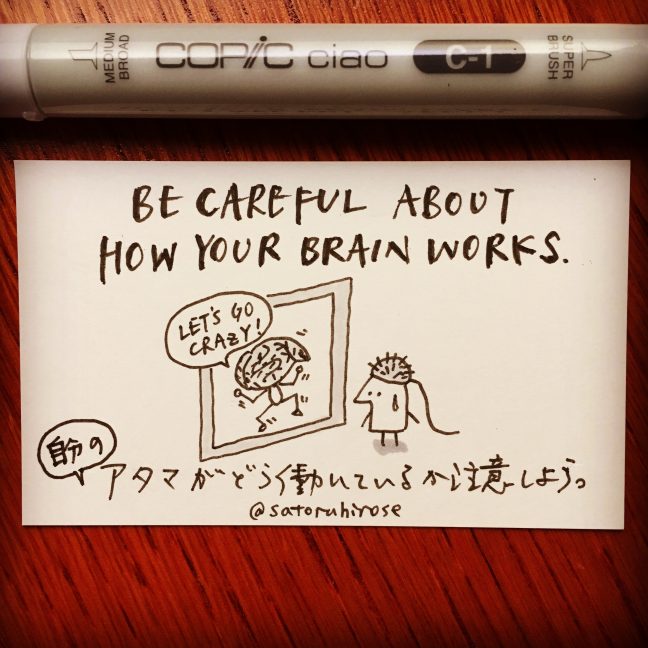Visual one pager of the latest article on Eric Barker‘s blog (@bakadesuyo) – New Neuroscience Reveals 4 Rituals That Will Make You An Awesome Parent

Visual one pager of the latest article on Eric Barker‘s blog (@bakadesuyo) – New Neuroscience Reveals 4 Rituals That Will Make You An Awesome Parent

Visuals make us smarter.
視覚情報は私たちをより賢くする。
Being logical only makes us too smart by half.
In our life and business, people do not look for a logic first. Either consciously or subconsciously, they quickly scan for something that affects their feelings, then look for the logic that justifies having such feelings. If nothing impacts their feelings, they are gone. Being logical won’t have them come back.
So what appeals to our feelings as well as our brain? IMAGES. VISUALS. Pictures and/or drawings that trigger our deep thoughts and inspire insight.
But we have to be careful — because there are zillions of low-quality visuals, especially on the Internet. What are they? Visuals that are somewhat appealing to the old parts of our brain but will neither trigger our deep thoughts nor inspire insight. Crafty marketers take advantage of that. We have to retrieve the power of visuals from them.

Search for your keystone.
自分の「要(かなめ)」を探求しよう。
Are your habits helping you grow further, or making you struggle?
A ‘keystone habit’ is the concept coined by Charles Duhigg, author of “The Power of Habit”. It is the habit that is important than other habits and has the power to transform our life. This concept can also applied to any organizations — because there are a certain type of behaviors in any organizations according to their own culture and way of thinking.
We are not always aware of such a keystone habit — or habits. When everything goes well, we tend to lose our focus on what we actually do every day. When things don’t go well, we tend to look for the reasons outside, not inside of ourselves. In both cases, we just don’t have enough information about our own habits, including the keystone habit(s).
The keystone habit is not always a good habit — sometimes a bad one. Eating or drinking too much, avoiding exercise, complaining or criticizing others all the time… Just QUITTING bad habits like these can impact our daily behaviors and eventually change our life and business.
To make such change happen, taking inventory of our own habits is a good start. Be aware of what you do every moment, or observe what your people do, and take notes. After two to three weeks, you will get an idea of what is going on and where these habits come from. Then you just have to work on it — it’s not always easy to make habit changes happen, but if you succeed, you will get the reward you deserve.

Create your true north.
自分が進むべき方向を自ら創ろう。
Are you moving toward your own goal, or the goal that someone else have you think is appropriate?
Many people and companies try to convince you that you should aim at the goal they create for you. Getting a job at a large company. Buying a house. Becoming a millionaire. Saving the world. You name it.
The problem is, many of us believe that we create these goals ourselves, although they have been implanted in our brain by someone else. If these goals completely resonate with you and you can live with them for the rest of your life, that is fine. But if you become skeptical about any of them, it’s time to think about your own goal. It’s not an easy path, but worthwhile.
We all deserve pursuing our own goal. And our brain and heart are capable of creating the goal — or many of them — that ignites our soul. Something really exciting that makes us wake up early in the morning and stay awake at night.
Let us think what we really want to aim at for the rest of our life. It’s not too late. Take one small step forward today.

Be careful about how your brain works.
自分のアタマがどう働いているか注意しよう。
The golden rule of investment is “past performance is not an indicator of future results”. The rule is applied to human performance as well. But many people — not only investors but also ordinary business people — don’t think that way.
Here are some examples:
These are also the examples of cognitive biases — the signs that our brain gets lazy. These biases sometimes work well, but quite often the golden rule supersedes.
Don’t let your cognitive biases play an important role in making business decisions. The golden rule is also applied to how our brain works — the auto-pilot system of our brain sometimes goes out of control.